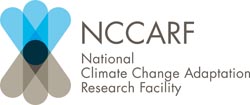A national meeting will this week debate what information Australia needs to meet its international obligations for its inland and coastal wetlands covered by the international Ramsar Convention on Wetlands.
The meeting,to be run by Charles Sturt University’s (CSU)
Institute for Land, Water and Society (ILWS), will feature keynote speaker and Deputy Secretary-General of the
Ramsar Convention Secretariat, Professor Nick Davidson, who believes that, as a founding Contracting Party to the Ramsar Convention on Wetlands, “Australia continues to have strong formal commitments to the conservation and wise use of wetlands”.
“Over the past 40 years, Australia has designated a national network of 65 Wetlands of International Importance, or Ramsar Sites, covering over eight million hectares.
“But with such a naturally highly variable climate, and with additional change coming from a warming climate and more extreme weather conditions, it is a big challenge to maintain this network.
“Australians may need to change their attitudes and treat wetlands as highly valuable, highly beneficial and critical natural infrastructure needed to help minimise climate impacts and help people adapt to living in a changing world, rather than treating wetlands as competitors for scarce water.”
A second lead speaker and senior lecturer in environmental management with Australian National University, Dr Jamie Pittock, noted that Australia has a vast area and diversity of wetlands, “but our management of them is patchy. Many wetlands are degrading, leading to losses of native plants, animals and services that people depend on, like clean water.
“Key threats to our wetlands include water diversion, salinity and pollution from nutrients, on-site development, barriers to movement of wildlife such as fish, and invasion by exotic plants and animals,” Dr Pittock said.
“Climate change will see less water supplied to wetlands in some regions, more water in others, and changes to the timing of flows. People in some places will try and divert a larger share of the available water to counteract climate-induced losses, or for industries favoured by climate policies such as coal seam gas production. We have some big questions ahead of us.”
The two-day meeting will bring together policymakers, wetland managers and researchers to discuss the information needed to establish or change policies to determine:
- How wetlands can be prioritised for adaptation based on likely future climate variability;
- When intervention is feasible to aid wetland adaptation to climate change;
- How management objectives should be set for wetlands under climate change and how management effectiveness could be monitored;
- Appropriate management responses to climate change for Ramsar listed wetlands; and,
- How political support for wetland adaptation to climate change could be best achieved.
Meeting convenor and ILWS director, Professor Max Finlayson, said Australia has significant problems in managing wetlands and rivers under our highly variable climate.
“We spend a lot of money in response to policy and climate conditions in the Murray Darling Basin, and not everyone is convinced this is going the right way.
“We should continue the debate and ensure that our policy responses are supported by good knowledge. We need to share knowledge from many sources and ensure our policymakers have access to the information they need to make sound decisions.”







Social
Explore the world of social